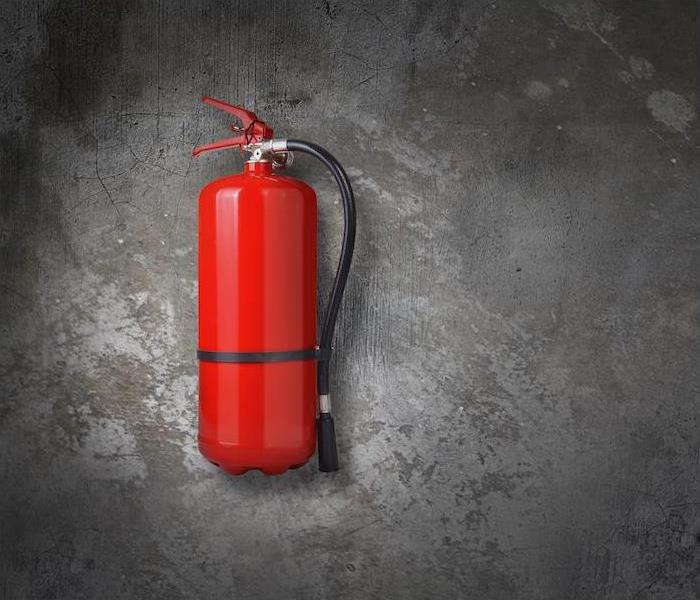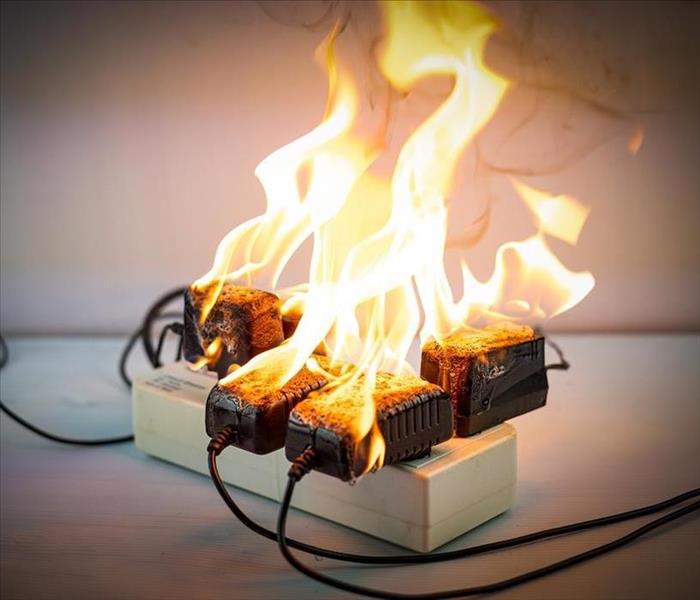Recent Fire Damage Posts
Easy Steps to Prevent Home Fires | SERVPRO® of Clatsop, Columbia Counties
6/6/2022 (Permalink)
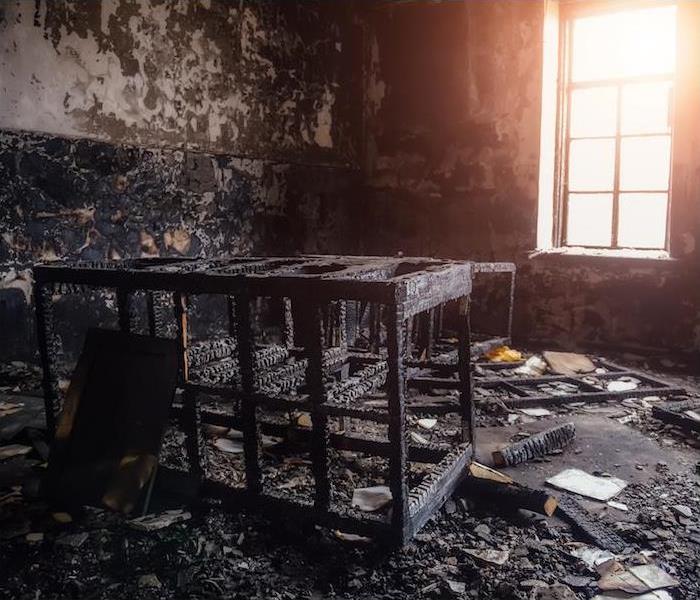 If your home is damaged in a house fire, SERVPRO of Clatsop, Columbia Counties is here to help. Contact us for any fire restoration needs.
If your home is damaged in a house fire, SERVPRO of Clatsop, Columbia Counties is here to help. Contact us for any fire restoration needs.
Working smoke alarm systems were present in 74% of house fires between the years 2015 and 2019, depicting the expansive use of fire alarm home setups across the United States.
Despite the fact that smoke detectors remain the best strategy to avoid fire-related deaths and property damage, there are many other simple, preventive steps you can take to prevent damage:
Clear Your Junk
Clutter may easily find its way into our houses. But when it comes to fire prevention, unattended loose, flammable things in corridors and storage places, such as clothing, spare blankets and other fabrics, are particularly harmful.
You can cause fire easily if you leave clothes near gas tanks or water heaters. To avoid hazards coming in the way if you need to flee your home fast, it is preferable to leave clear, clean places. That way, if a fire does break loose, the clear path will allow the flames to travel more easily and encounter less flammable material in its path.
To avoid creating a fire hazard, leave enough space between wall outlets and carpets, lamps or furniture.
Barricade the Exterior of Your Home
There are various methods for making the exterior of your home more protected against fires. Using landscaping strategies with intention, you can make it easier for firemen to enter your property in the event of a fire and also make it more difficult for fire to spread to your house.
Ideally you would maintain at least 30 feet of defensible space on the exterior of your home at all times.
Consider replacing any flammable materials used outdoors with more fire-safe things such as brick, rock and gravel. Also, remove any trash or loose material that may disrupt the path of the fire squad.
Prepare an Emergency Water Source
If disaster strikes and the water source inside of your home is no longer usable, be prepared with a Plan B. Set up a garden hose or sprinkler system on the outside of your home and make sure that it can reach all the way around the building.
Following these steps can dramatically decrease your home’s fire risk and ensure that you and your family are ready in the case of a home fire.
Because we spend so much time in our homes and effort upkeeping them, it is essential that we take the time to clean and check for hazards that could increase your home’s susceptibility to fire. This way your home stays in tip-top shape- so that you and your loved ones can continue to make memories inside.
Watch Your Habits
Unattended cooking is one of the leading causes of home fires in Oregon. It is critical to pay attention during your cooking, look out for hazards and ALWAYS turn off the oven and any stove burners.
Neglected candles left burning are one other of the top causes of home fires. It is wise to always triple-check your home for any burning candles, incense or wax warmers before leaving.
If you have experienced fire damage or want to learn more about our fire damage restoration services, contact us today. We’re here to act fast, 24⁄7.
The Shape of Every Fire | SERVPRO® of Clatsop, Columbia Counties
1/28/2022 (Permalink)
 If your home or business has any damage, SERVPRO of Clatsop, Columbia Counties is ready around the clock to help you recover.
If your home or business has any damage, SERVPRO of Clatsop, Columbia Counties is ready around the clock to help you recover.
When you think of fire, you probably think of flames dancing and devouring, morphing to outline the shape of whatever poor substance is engulfed. But it turns out every fire, regardless of its form, has the same shape—in a manner of speaking.
Meet the fire tetrahedron. This shape, effectively a pyramid made of four triangles, is used by scientists to portray the four elements which make up every fire.
These elements also teach us everything we need to know about how fires can be combatted. Let’s take a tour of the fire tetrahedron.
The 4 Things a Fire Needs to Live
Fuel. Every fire happens to something—in other words, fires don’t happen in a vacuum, neither literally nor figuratively. Each fire starts with a fuel source of either an organic or inorganic nature.
Heat. In order for a fire to break out, the fuel source in question has to reach a high enough heat to produce the combustion. This, of course, varies among different fuel source materials, but every material has its combustion level.
Oxygen. Fires use oxygen to further fuel their combustive exploits, and they leave behind messes of carbon dioxide to clean up and carbon monoxide to breathe.
Chemical Chain Reaction. The chain reaction is the most recent addition to the fire tetrahedron, after the scientific conclusion that all the preceding elements have to continuously happen together, over and over, for a fire to thrive. Now if you want a fire to stop, that’s another story, with the same actors.
The 4 Ways to Stop a Fire
Cool it. The sustained heat of the fuel source is crucial to a fire’s survival. Therefore the cooling of the fuel source and the restoration of a thermal balance will cause the fuel to cool faster than it can heat up, leading to the demise of the fire.
Smother it. Not to be crude, but anything that needs oxygen can be seriously hampered by a sustained period without oxygen—and fire is no different. Any covering that prevents a fire from breathing prevents it from living.
Starve it. When a fuel source becomes scarce or unavailable, there’s nothing left for a fire to burn. After all, the material has been charred or otherwise used up, and there’s nowhere else to spread, your fire is done.
Interrupt the chain reaction. As the chemical reaction is a crucial part of the fire, the disruption of the reaction causes the fire to stutter and fail. Certain gases and chemicals have been found to be rather adept at this, though some of them are not great for the environment.
If the fire tetrahedron makes a wreck of your home or business, we’re ready around the clock to help you recover. Contact SERVPRO anytime for fast, thorough cleanup and recovery after a fire.
The Top Causes of House Fires | SERVPRO® of Clatsop, Columbia Counties
11/8/2021 (Permalink)
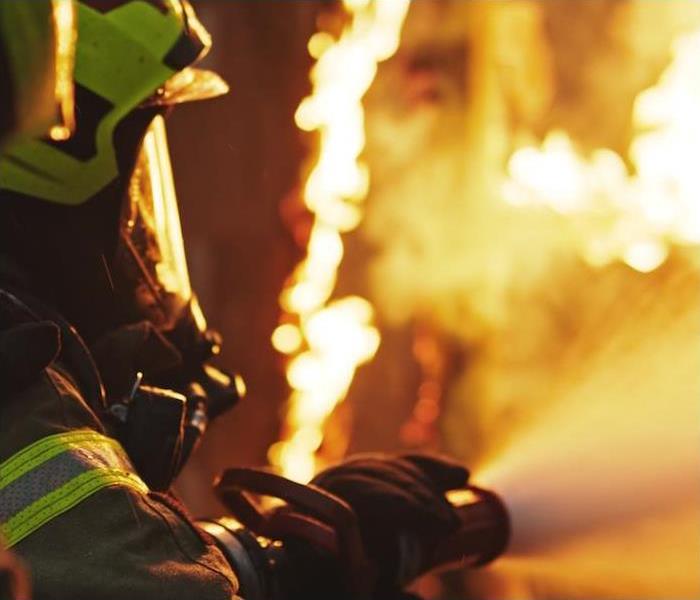 Regardless of the cause, SERVPRO of Clatsop, Columbia Counties are here for you if your home is affected by fire.
Regardless of the cause, SERVPRO of Clatsop, Columbia Counties are here for you if your home is affected by fire.
The thought of a fire is truly terrifying for any homeowner—it’s unpredictable, quick to spread out of control and can create complete devastation. One would think homeowners would go to any lengths to avoid this nightmare, but yet, despite decades of awareness campaigns and increased technology, over a quarter of all reported fires still happen at home.
Let’s examine the common causes of these fires, and see if we can’t shed some light on fire safety deficiencies and point some homeowners toward more ways they can stay alert.
Cooking. This is the top cause of fire and fire injuries by a long shot (though not the leading cause of fire casualties). Almost 50% of all house fires begin in the kitchen, and the leading cause is unattended cooking. That’s right—the No. 1 thing you can do to avoid a raging fire at home is to be attentive in the kitchen and stay at the stove. It really is that simple.
Heating equipment. Some 14% of all house fires in the U.S. begin with heaters. Portable space heaters lead the way, aided by equipment malfunctions and fires that start because clothing or materials are too close to heating elements.
Electrical fires. There are a number of causes of electrical fires—everything from faulty wiring to using high-watt bulbs in low-watt sockets. Additionally, we don’t often take into consideration that older homes may not be equipped for the amount of electricity modern living requires.
Intentional fires. It’s a rather astonishing figure: 28,000 intentional home fires burn every year. These are fires begun with the intention of setting a structure ablaze, as opposed to being set for some other purpose and simply breaking containment.
Smoking materials. Many smoking accidents happen as people fall asleep, leaving ashes to burn or blow away, or causing cigarettes, cigars or even vapes to combust or fall to the ground. This results in a low amount of fires, but sadly turns into the leading cause of fire deaths.
Regardless of the cause, SERVPRO is here for you if your home is affected by fire. Contact your SERVPRO team today to see how we can help.
Fall Fire Dangers | SERVPRO® of Clatsop, Columbia Counties
9/27/2021 (Permalink)
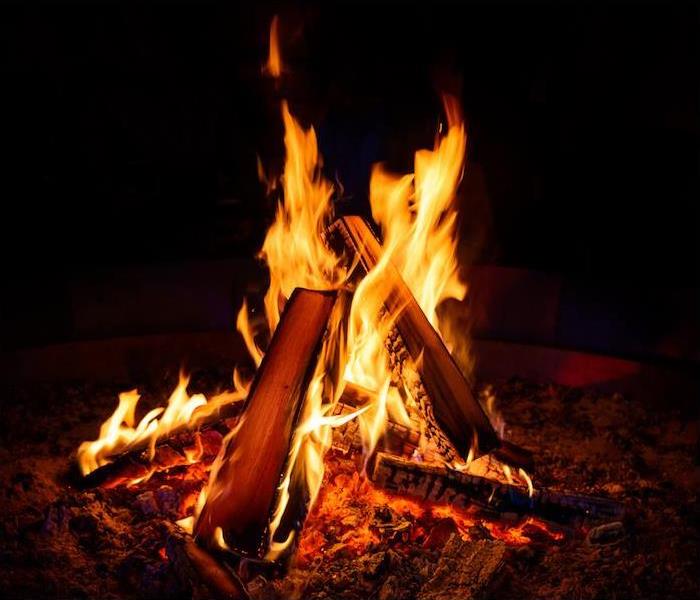 Be mindful about fall fire safety. Always remember that SERVPRO of Clatsop, Columbia Counties is a trusted leader in the restoration industry.
Be mindful about fall fire safety. Always remember that SERVPRO of Clatsop, Columbia Counties is a trusted leader in the restoration industry.
Do you feel that? It’s Autumn in Oregon again, and that means temperatures are peaking in the 60s and you’re probably breaking out your favorite seasonal hoodie. It’s a favorite season for campers, nature lovers of all kinds and of course trick-or-treaters.
As always, however, each season brings about its own potential for fire hazards of which we need to be mindful. So grab your favorite warm beverage and let’s check out a few ways to stay safe this fall.
Campfire Safety
It’s important to know both how and where to build a campfire, as well as how to put it out. Build away from any flammable structures, and don’t set a fire under low-hanging branches.
Use only a match or lighter to start a fire from tinder and small sticks, adding larger pieces of wood as the fire grows. Never use accelerants like kerosene or lighter fluid.
It’s not safe to leave your camp until the fire is completely extinguished, as anything left behind (especially larger pieces of wood) can reignite with enough oxygen. Douse your fire slowly with a bucket of water and continue to soak it until no embers remain.
Leaf Burning
Many homeowners choose to burn leaves as a natural, simple solution, but always keep safety at the forefront.
Provided it’s legal in your part of the county, burn your leaves in a barrel or pile, safely away from structures or other piles. Never burn anything inorganic, as it can release fumes or introduce harmful chemicals into the soil.
Space Heaters
Portable space heaters are a top cause of household fires in colder months. Don’t put your heater near anything flammable.
Keep heaters away from kids or play areas, making sure they’re on level ground and that they’ll automatically shut off if they get tipped over. Don’t use them with extension cords as they can cause short circuits, and always turn them off when you leave or go to sleep.
Halloween
We’ll get to this in more detail later, but Halloween and fall decor can be flammable, as can costumes. Get your house ready for spooky season but do it with safety in mind.
If a fire hazard should turn from potential to reality in your home, remember a nationally trusted leader in the recovery industry and contact SERVPRO to get your property fully restored right down to the smell of smoke.
Using Your Land to Protect Your Home From Fires | SERVPRO® of Clatsop, Columbia Counties
7/23/2021 (Permalink)
 If your home is damaged by fire or any other reason, SERVPRO of Clatsop, Columbia Counties is ready and able to repair any damage.
If your home is damaged by fire or any other reason, SERVPRO of Clatsop, Columbia Counties is ready and able to repair any damage.
Every property owner fears seeing their property go up in flames, and wildfires cause home damage more often than you might realize. A wildfire can spread incredibly quickly, and with so much of our world made of flammable material, it’s a marvel that we can even contain them at all.
But there are a few things we can do preventively to give ourselves a fighting chance against wildfires, aside from the obvious help that would come by us simply becoming more careful.
Today we’re talking about one of those things: “defensible space.”
What Is Defensible Space?
Despite the galactic possibilities of the name, it has nothing to do with NASA missiles.
Defensible space is the bumper area you can create around your home by removing the fuel a wildfire needs to spread quickly (like dead leaves and branches), adding things like flame-retardant gravel and pavement in areas surrounding your home, and practicing responsible planting and pruning.
You can think of defensible space as a barrier of protection (aka defense), designed to safeguard your home from wildfire by retarding the spread of fire as it comes nearer. It also gives firefighters their best chance of stopping a wildfire before it reaches the walls of your home.
Defensible space is actually required by law in Oregon, so make yourself aware of the regulations and codes so you can be in compliance.
Why Defensible Space Matters
We know all too well that Oregon has experienced recent wildfires (we lost over a million acres of land in the 2,215 fires in 2020), but it’s not only the West Coast—there were 59,000 wildfires across the United States in 2020.
Even removing California and its devastating 10,000+ fires from the statistics, the average number of wildfires per state in 2020 was still almost 1,000. And the first half of 2021 has seen about 25% more fires than 2020 did in its first half.
We should do our part in whatever way we can to prevent wildfires, and defensible space is one more way we can be proactive.
If your home is damaged by fire of any sort, wild or not, SERVPRO is ready and able to repair the damage caused. Get in touch today to get the pros on your team.
Grill and Fire Pit Safety | SERVPRO® of Clatsop, Columbia Counties
6/7/2021 (Permalink)
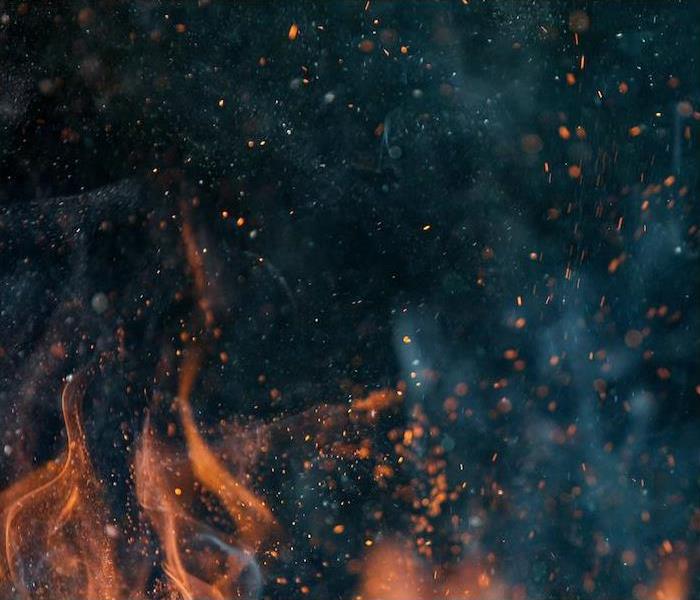 Restoring fire and smoke damage is one of our specialties. Contact SERVPRO of Clatsop, Columbia Counties to learn more.
Restoring fire and smoke damage is one of our specialties. Contact SERVPRO of Clatsop, Columbia Counties to learn more.
In the warmer months, we often feel a new lease on life. The harshness of winter melts away, leaves and plants blossom and bloom, and we get a sense of reinvigoration.
The outdoors calls, tempting us with fresh sights and scents, and we’ll use just about any excuse to take advantage of the pleasant weather.
The middle of the year also brings lots of social events, family gatherings and outdoor cookouts, which unfortunately means a rise in backyard fires. In fact, spring sees more daily fires on average than any other time of year. Let’s take a look at some of the fire challenges presented in these middle months.
The grill. The grill is the first guess for most backyard fires, and with good reason—the combination of flame, high temps and abundance of nearby accelerants are a perfect combination for accidental, unwanted blazes. You want to be sure you’re grilling safely, so first inspect the grill and verify everything is in proper working order with no damage or leaks, move it away from anything flammable (like dry leaves, brush or even siding), and clean it well. Almost 20% of grill fires are due to poor cleaning.
The fire pit. Conversations and marshmallows around the fire pit are great, but to be safe, you need a bucket of water within reach to douse any errant flames or embers. Use this to put out the fire when you’re finished as well (do it slowly and soak everything until it’s cool to the touch). Never add leaves or pine needles to the fire, and never leave it unattended or allow children near it unsupervised.
Chimneys and dryer vents. Alright, these don’t exactly scream spring, but it’s still a great time to take care of them. You’re done with your fireplace until fall, so clean out the ash and soot so you don’t start with a dangerous buildup next time you use it. And check your dryer’s vent pipe to make sure no flammable lint is waiting for a light inside.
Your local SERVPRO technicians are on hand 24⁄7 for emergencies. If you encounter fire damage at your home or business, no matter the cause, we will be there faster and have it cleaned up sooner. Call or click today and experience the SERVPRO difference.
What Do I Do After a House Fire? | SERVPRO® of Clatsop, Columbia Counties
1/25/2021 (Permalink)
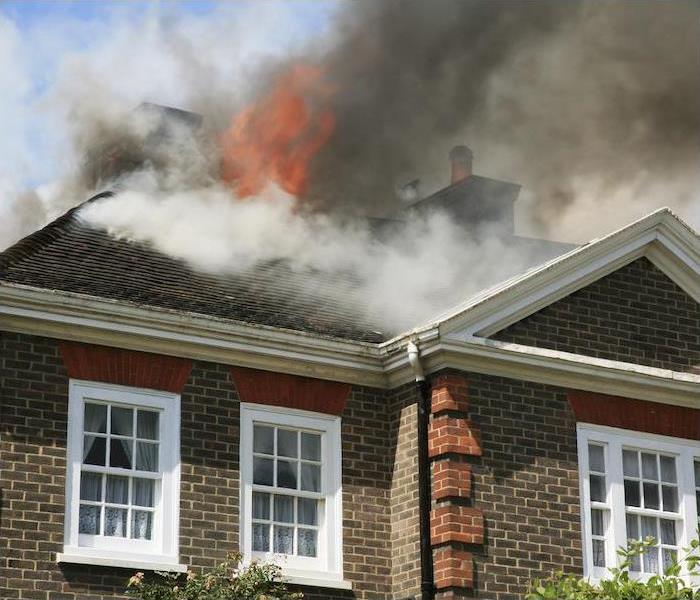 If you have fire damage due to a heating malfunction or other issue, count on SERVPRO of Clatsop, Columbia Counties to fully restore your home.
If you have fire damage due to a heating malfunction or other issue, count on SERVPRO of Clatsop, Columbia Counties to fully restore your home.
The unthinkable has happened - and you and your family have survived a fire. Maybe flames scorched your kitchen or perhaps your house burned completely.
However it happened, you may be feeling traumatized and at a loss for what to do next. Let’s talk about the steps to take after a fire to help you get back on your feet again.
- Get to Safety
After a fire, do not re-enter your home until your local fire services have given permission. Instead, find a place to stay. If you don’t have friends or relatives who can take you in, your local Red Cross or Salvation Army may be able to assist you.
- Make Contacts Promptly
After a fire, you have plenty of calls to make and emails to send. You’ll need to get the ball moving with insurance, as well as with restoration or rebuilding. Contacts to make include:
- Your insurance agent
- Your landlord or mortgager
- Your local fire department (for a copy of the fire report)
- Essential contractors, such as a cleaning and restoration professional
- Any accounts or agencies you need documentation reissued for (bank, driver’s license etc.)
Of course, you may not have all these email addresses or phone numbers at hand—they might have been in the fire!
To make your life easier, plan ahead by creating a disaster contact list and placing it in an online location, such as a Google drive. That way, you can get to it from any location that has internet.
Perform other documentation, too, such as taking photos and saving all receipts related to the fire.
- Keep Caring for Your People
Emotional and physical needs won’t disappear after a day or two. Fires can be traumatic for children and adults.
If needed, check with your doctor for any lingering problems—smoke inhalation can make some chronic illnesses worse, for instance. Have your veterinarian check your pet’s health, too. And take time to attend to your own mental health, such as by visiting a counselor or looking for online resources.
If you’re concerned about planning ahead for a fire or other disaster, consult with SERVPRO. We can help with disaster planning, as well as advise you about how best to file insurance claims.
From emergency cleaning and restoration to routine disinfection, we’re there for you. Contact us at any hour for a consultation or immediate assistance.
We Have Resources to Help With Fire Restoration l SERVPRO® of Clatsop, Columbia Counties
12/28/2020 (Permalink)
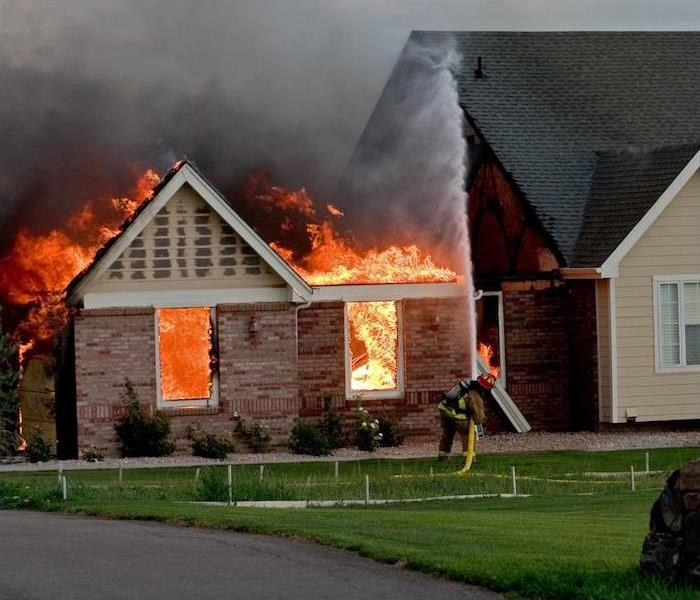 If you have fire damage due to a heating malfunction or other issue, count on SERVPRO of Clatsop, Columbia Counties to fully restore your home.
If you have fire damage due to a heating malfunction or other issue, count on SERVPRO of Clatsop, Columbia Counties to fully restore your home.
Did you know that house fires are more common during the winter months?
It’s true. There are various causes of winter fires, ranging from problems with space heaters to toppled candles.
Accidents involving Christmas trees are one of the leading causes of holiday fires. But issues with home heating systems and mishaps in the kitchen can cause problems for homeowners, too.
The Help You Need Is Right Here
While no one likes to think about the aftermath of a house fire, it’s a reality for millions of American families each year. We want to help you restore your home to its original condition if damaged by a fire.
Here’s why we are Clatsop & Columbia counties’ trusted partner for fire damage remediation and restoration:
Our team believes in restoration first. We have a team of local experts who want to ensure you get the help you need. With our pool of resources, we can help you save your repairs and homeowners insurance premiums. Our team’s experts want to make your restoration process as painless as we can for your family. We’ll make it like it never happened.
We’ll help with the entire restoration process. Fire damage goes beyond problems caused by the fire. It can include smoke damage, water damage and issues with odors in furniture upholstery. Our team can work through restoration on all of these and more.
We are members of your community. SERVPRO is a national company. But the owner of our location is a resident. We have access to the leading-edge resources, equipment and techniques available to a large national company, and we bring those things to your restoration project.
We’re available 24⁄7. Fires don’t happen on a predictable schedule. And getting started with the restoration process as soon as possible is a vital step in restoring your home. We know that timing matters during an emergency, so our team is available at any time when you need help.
If you have fire damage in your home due to a kitchen, heating or other fire, you can count on us for restoration assistance. Our team is always ready to meet your needs and help you restore your home. Contact us at any time to learn more about our restoration services.
Does Your Business Have a Fire Extinguisher? | SERVPRO® of Clatsop, Columbia Counties
11/27/2020 (Permalink)
A few facts about fires: they’re decreasing in the U.S., but the dollar value of the damage they cause is going up. The most common fires, both in residential and business settings, are cooking-related.
Carelessness comes next as a cause (think about an employee carelessly scuffing out a cigarette and tossing it into a trashcan when the boss looks into the bathroom).
Fire Extinguisher Requirements
To put out small fires in a hurry, keep a fire extinguisher on site at your business. In fact, the National Fire Prevention Association code mandates having one. Fire extinguishers are required to be visible and accessible to the people who might need to use them.
Visible. Your fire extinguisher has to be in plain view. If it isn’t—for instance, if you keep it under the break room sink—you must place clear signs indicating where it is.
Accessible. Your fire extinguisher can’t be too near the floor or ceiling. Also, if you have a larger space, your extinguisher(s) must be within 75 feet “travel distance” from any spot in the building. This distance can be as little as 30 feet from specific hazards, such as gasoline.
Kinds of Fire Extinguisher
For most shops and offices, a Class A fire extinguisher is exactly right. If you have additional hazards, though, you may want a more robust fire extinguisher.
Class B can put out flammable liquids, such as gasoline. Class C also resists electrical conduction, meaning it is used in places where there’s a potential for electrical fires. Class D can put out flammable metals.
How to Use a Fire Extinguisher
Sure, you’ve done it (haven’t you)? It’s never a bad time to take just two or three minutes for a fire extinguisher refresher.
- Pull the pin to break the seal.
- Point the nozzle (tube) at the base of the fire.
- Pull the handle.
- Swing back and forth until the fire is out.
It’s also a great idea to place a “how to use” diagram near your business fire extinguisher, just in case.
From fire to storm to flood, disaster can strike a business at any time. To discuss a SERVPRO® Emergency READY Profile for your business, contact us at any hour for assistance.
Fire Safety: Electrical Focus | SERVPRO® of Clatsop, Columbia Counties
11/19/2020 (Permalink)
The holiday season is coming fast, and with it the temptation to string as many colored lights as possible inside and out. Before you start plugging everything in, do a quick review of your home’s electrical safety situation.
According to the National Fire Protection Association, “electrical distribution or lighting equipment” accounts for about 34,000 home fires every year. These hazards include cords, lighting, plugs and wiring.
From the point at which electricity enters your home to endpoint devices, we’ll look at the most common sources of danger:
Human Error
From using devices in an unsafe manner to allowing curtains to droop against heating elements, human carelessness contributes to many home electrical fires. The best remedy is caution. Always read appliance directions and follow them.
Never leave devices such as space heaters unattended. Make sure electrical devices and appliances have plenty of space around them. Treat electrical devices with a healthy respect in every situation.
Electrical Failure or Malfunction
After human error, electrical “failure or malfunction” makes the second leading cause of deaths from house fires. Many fires involve arcing, where a spark jumps from one conductor to another. Damaged wires and loose connections—in your house wiring or in appliances—can lead to arcing. So can faults in junction and control boxes.
Professional Advice. If your house has older wiring, it might be time for a visit from an electrician. He or she can look for any wiring that needs to be updated. Your electrician can also install arc-fault circuit interrupters to cut off power when dangerous arcing conditions occur.
Sharp-Eyed Solutions. For your part, you can check devices and appliances from small holiday lights through washers and dryers. Look for any exposed wires, loose cords or frayed coverings of cords/wires. Discard damaged devices or have them professionally repaired.
Distribution
Distribution problems also contribute to house fires. Connecting more than one appliance to a socket spells trouble. Similarly, extension cords should only be used occasionally, not incorporated as part of your day-to-day wiring solution.
Too many appliances connected to one outlet or circuit can lead to fires. Make sure you place no more demand on any one circuit or outlet than it can support.
From fire to storm to flood, disaster can strike a business at any time. To discuss a SERVPRO Emergency READY Profile for your business, contact us at any hour for assistance.
How Do I Get The Smoke Smell Out Of My Home?
9/28/2020 (Permalink)
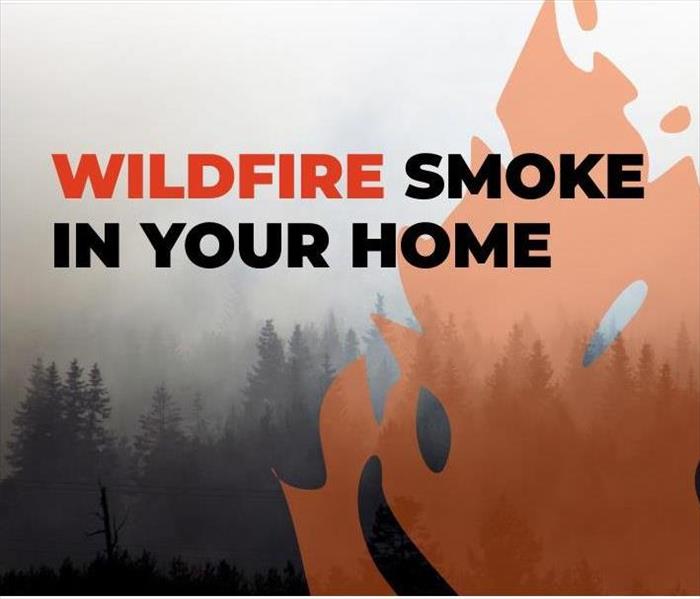 Smoke belongs by the campfire not in your home!
Smoke belongs by the campfire not in your home!
As the rain clears the smoke and the fires are contained some people might still find the smell of smoke lingering in their homes.
This week on our SERVPRO blog feed we are going to provide you with some quick tips on how to get the smell of smoke out of your house.
Things You'll Need
· Baking Soda
· Vinegar and Water Solution
· Heavy duty washing detergent
Instructions:
- Throw open the windows and even a door or two. The less time the smoke sits around the greater chance of getting rid of it quickly. Even if it is in the middle of winter, airing your house right away will disperse the smoke and prevent any more absorption. If the weather is nice, you might want to keep the windows open for a few days, at least during the daylight hours.
- Launder your drapes and table linens as soon as possible; they will absorb the smoke odor rapidly. Wash them in the hottest water that the fabric can endure and heavy duty washing detergent. If the fabrics cannot be washed at home, take them to a dry cleaner, which will have solutions that will make the fabric smoke-free.
- Clean your cabinets, walls, and floors with a one-part vinegar, one part warm water solution. Be sure to test this first but most surfaces are fine with this solution. Vinegar naturally absorbs odors so the smell of vinegar and smoke should go away in a few hours after using it.
- Place bowls of baking soda around your kitchen, and even put a few inside the cabinets, pantry, and any other room that has an odor. This too will help to absorb the odor in a few days time. Sprinkle the rugs and carpeting with baking soda and vacuum. Sprinkle the baking soda again and this time let sit for a few days time before vacuuming.
If the house still smells of smoke or if you don’t want to do the work in the first place, just call us here at SERVPRO of Clatsop, Columbia Counties and we’ll get it right out.
(503) 791-6714
How to Make Sure You Are As Prepared as Possible for a House Fire | SERVPRO® of Clatsop, Columbia Counties
9/4/2020 (Permalink)
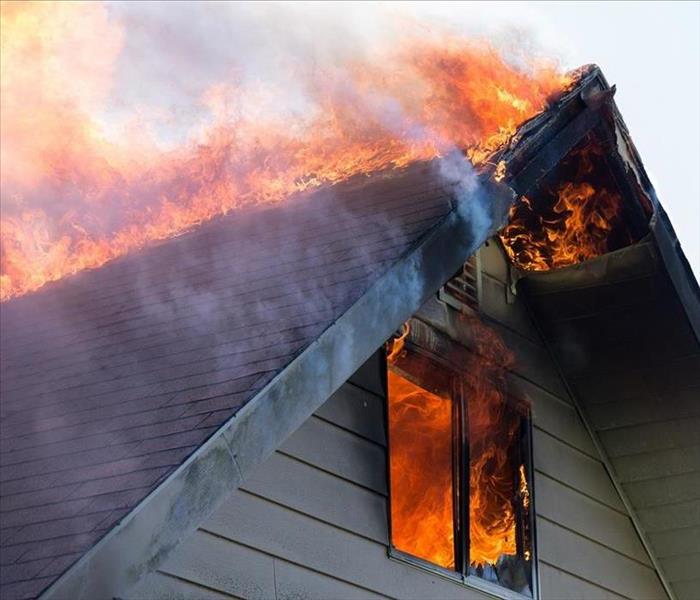 An emergency can happen at anytime. Make sure you and your family have a plan.
An emergency can happen at anytime. Make sure you and your family have a plan.
When you think of a house fire, you are likely to think of news coverage you have seen or
families you have known that have experienced one, but have you considered what you would
do if one happened in your home?
Even small house fires can cause major damage, and because of how rapidly they spread,
making sure you are as prepared as possible before one starts is so important. By knowing
what to do when a fire starts and how to begin the recovery process, you can keep your family
much safer in the event that a house fire does occur.
Preparing Your Household for a House Fire
Designate 2 Exits From Every Room
If your house is multiple stories or has rooms with only one entrance, it is important that you do what you can to give every room two routes of escape in case of a fire. When a fire blocks one
exit, it is important that someone in the room is able to utilize the other. This can be done by
installing emergency ladders in upstairs rooms and making sure that windows open in every
room of the home so your family can get out safely.
Create and Execute an Escape Plan
It is important to not only plan for a fire evacuation, but also to be able to execute it in under two minutes to avoid dangerous smoke inhalation. Plan for everyone in your evacuation plan, including children, elderly family members and pets, to make sure no one is left behind. Once you have a plan drafted, be sure to run drills of it at least every few months so that everyone in the household knows exactly what to do should the smoke alarms sound.
Have a Plan in Place for the Aftermath
Once you escape the home, you should call 911 immediately to get the fire department on their
way to help extinguish the flames. Even if the flames are put out quickly, dangerous smoke and
soot buildup can be present, so it is important to have a plan for restoration as well. If your home has been damaged by a fire, you can count on us for all your restoration needs.
We are here 24/7 to come to your aid after a house fire. Call us anytime to report damage or
learn more.
 If your home is damaged in a house fire, SERVPRO of Clatsop, Columbia Counties is here to help. Contact us for any fire restoration needs.
If your home is damaged in a house fire, SERVPRO of Clatsop, Columbia Counties is here to help. Contact us for any fire restoration needs.






 24/7 Emergency Service
24/7 Emergency Service







